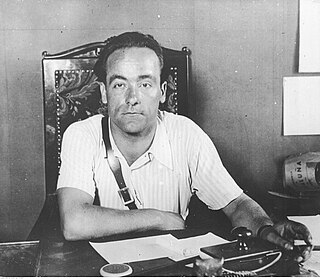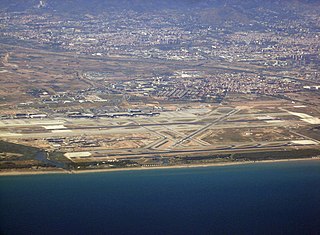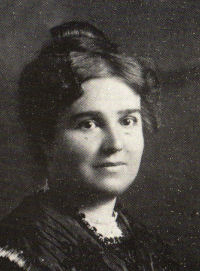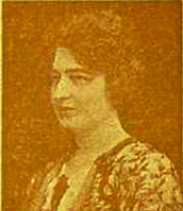Related Research Articles

The Spanish Revolution was a workers' social revolution that began at the outbreak of the Spanish Civil War in 1936 and for two to three years resulted in the widespread implementation of anarchist and, more broadly, libertarian socialist organizational principles throughout various portions of the country, primarily Catalonia, Aragon, Andalusia, and parts of the Valencian Community. Much of the economy of Spain was put under worker control; in anarchist strongholds like Catalonia, the figure was as high as 75%. Factories were run through worker committees, and agrarian areas became collectivized and run as libertarian socialist communes. Many small businesses, such as hotels, barber shops, and restaurants, were also collectivized and managed by their workers.

Joan Garcia i Oliver (1901–1980) was a Catalan anarcho-syndicalist revolutionary and Minister of Justice of the Second Spanish Republic. He was a leading figure of anarchism in Spain.

The Commonwealth of Catalonia was a deliberative assembly made up of the councillors of the four provinces of Catalonia. Promoted in its final stages of gestation by the Regionalist League of Catalonia, it was strongly endorsed by municipal referendum in October 1913.

Célestin Freinet was a noted French pedagogue and educational reformer.

El Prat de Llobregat, commonly known as El Prat, is a municipality of Spain located in the comarca of Baix Llobregat in Catalonia. The Josep Tarradellas Barcelona–El Prat Airport largely lies within the municipal limits. It is part of the Barcelona metropolitan area.

The Maristes Valldemia school, is located in Mataró, Province of Barcelona - Catalonia (Spain). It is a catholic school run by Marist Brothers, and dedicated to Our Lady the Virgin of the Candle. The ownership is held by Fundació Champagnat, Fundació Privada.

ELISAVA is the first school of design, an internationally oriented educational and research institution affiliated with Pompeu Fabra University The school is situated in Barcelona and is home to around 2,200 students and more than 800 teachers.

The University of Vic - Central University of Catalonia (UVic-UCC), is a Catalan university with premises in Vic, Manresa and Granollers. It is a privately managed institution, under public supervision through its proprietor, the Balmes University Foundation, whose chair is the Mayor of Vic. UVic-UCC is a higher education and research centre. The UVic-UCC is a member of the Vives University Network.

The Theatre Institute of Barcelona is a public institution dedicated to training in the performing arts, classical dance, contemporary and Spanish as well as in theater, film, choreography, etc. It was created in 1913 in Barcelona by Adrià Gual. It belongs to the Province of Barcelona and aims to teaching the performing arts, the organization of congresses, conferences, exhibitions, and research of any form of performing arts. It is currently led by Jordi Font.

Rosa Sensat i Vilà was a Catalan teacher. She contributed to the development of the Catalan public schools during the first third of the 20th century.
The Ferrer school was an early 20th century libertarian school inspired by the anarchist pedagogy of Francisco Ferrer. He was a proponent of rationalist, secular education that emphasized reason, dignity, self-reliance, and scientific observation, as opposed to the ecclesiastical and dogmatic standard Spanish curriculum of the period. Ferrer's teachings followed in a tradition of rationalist and romantic education philosophy, and 19th century extragovernment, secular Spanish schools. He was particularly influenced by Paul Robin's orphanage at Cempuis.

Francesc Ferrer i Guàrdia, widely known as Francisco Ferrer, was a Spanish radical freethinker, anarchist, and educationist behind a network of secular, private, libertarian schools in and around Barcelona. His execution, following a revolt in Barcelona, propelled Ferrer into martyrdom and grew an international movement of radicals and libertarians, who established schools in his model and promoted his schooling approach.

Joan Doménec Bardina Castarà (1877-1950) was a Spanish-Chilean theorist of education, acknowledged for his innovative approach to pedagogy and for his contribution to renewal of the Catalan schooling system. In Chile he is known also as a scholar in law; in Spain, and especially in Catalonia, he is recognized as a member of the Catalanist movement. Active in Carlism during his youth, he is considered a typical case of a transitional political identity, moving from Carlism to peripheral nationalism. Increasingly concerned with social issues, by the end of his life he sympathized with Francoism and Nazism; he also focused more on his extended family and became increasingly religious. His manuals, published anonymously and related mostly to health, hygiene and cuisine, were fairly popular in Spain in the 1920s and 1930s.

Dolors Bassa i Coll is an educator, psychopedagogist and Spanish politician from Catalonia who held the position of Minister of Labour, Social Affairs and Families in the Generalitat de Catalunya until Spain dismissed the Catalan government on 27 October 2017. She is known for her syndicalist career in the major Spanish trade union, Unión General de Trabajadores. Since March 2018 she was remanded in custody, without bail, by order of the Supreme Court of Spain, accused of sedition and rebellion. She was sentenced on October 14, 2019, to 12 years in prison for sedition, as being responsible for devoting several thousand public schools as polling stations in the 1 October 2017 referendum. She was freed in June 2021 following a government pardon.

Marta Ángela Mata Garriga was a Spanish politician and pedagogue who promoted the renovation of public schools during Spain's transition to democracy in 1978, and defended secular schools. She was the founder of the Associació de Mestres Rosa Sensat and wrote numerous books and articles on reading and writing didactics, pedagogy, educational policy, and children's stories.

Antònia Adroher i Pascual was a Spanish teacher and political activist from.
Joan Puig i Elias (1898–1972) was a Catalan pedagogue and anarchist from Spain who continued the work of Francisco Ferrer. During the Spanish Civil War he was president of the New Unified School Council.

The Cultural Institution of the Center of Catholic Influence (ICCIC) is an educational institution at the service of Catalan society.

Adelaida Ferré i Gomis de Ruíz de Narváez was a Spanish historian, teacher, and folklorist associated with lace-making in Catalonia.

Maria Baldó i Massanet was a Spanish pedagogue, feminist, ethnologist, and folklorist. She was involved in the political, social, cultural, and educational fields of Catalonia.
References
- 1 2 "L'ensenyament a Catalunya durant la Guerra Civil" (in Catalan). Els mestres de la República a Manresa. Trajectòries, pedagogies i depuracions.
- ↑ Martí Font, Jordi (February 16, 2018). "La primera immersió lingüística i l'anarquisme" (in Catalan). llibertat.cat (Portal d'informació i opinió de l'Esquerra Independentista).
- 1 2 3 4 Gonzàlez Agàpito, Josep; Marquès, Salomó; Mayordomo, Alejandro; Sureda, Bernat (2002). Tradició i renovació pedagògica, 1898-1939: història de l'educació : Catalunya, Illes Balears, País Valencià (in Catalan). Barcelona: L'Abadia de Montserrat. pp. 489–491. ISBN 978-84-8415-300-9.
- ↑ Palau, J.; Fonts, M.; Cela, J. (2016). Nuevos escenarios, nuevos aprendizajes (in Spanish). Barcelona: Graó. ISBN 978-84-9980-732-4. OCLC 969620518.
- ↑ Consell de l'Escola Nova Unificada (in Catalan). Gran enciclopèdia catalana. April 1, 1987. 0019455.
- 1 2 3 4 5 6 7 8 9 10 11 González-Agápito, J. (1992). L'escola nova catalana 1900-1939: Objectius, constants i problemàtica (in Catalan). Vic: Eumo.
- 1 2 3 4 Valls Montserrat, Ramona (1997). "Escola nova" i pedagogia catequètica a Catalunya : 1990-1965 (in Catalan). Barcelona: Facultat de Teologia de Catalunya. ISBN 84-920074-6-X. OCLC 806985158.
- 1 2 3 Aisa, Ferran (2008). Mestres, renovació i avantguarda pedagògica a Catalunya. De bat a bat, 11 (in Catalan). Barcelona: Edicions de 1984. p. 238. ISBN 978-84-92440-13-9. OCLC 804617361.
- ↑ Soler i Mata, Joan (2012). "The Rousseau Institute of Geneva's influence on and presence in Catalan pedagogy in the first third of the 20th century". Catalan Social Sciences Review. 1 (1): 58–87. doi:10.2436/20.3000.02.5. ISSN 2014-6035.
- ↑ Lillard, Angeline S. (December 2018). "Rethinking Education: Montessori's Approach". Current Directions in Psychological Science. 27 (6): 395–400. doi:10.1177/0963721418769878. ISSN 0963-7214. S2CID 149923425.
- ↑ Freinet, Célestin (1990). Per l'escola del poble : guia pràctica per l'organització material, tècnica i pedagògica de l'escola popular (in Catalan). Vic: Eumo. ISBN 84-7602-263-8. OCLC 802702818.
- ↑ Hwang, Sung-Won (October 31, 2018). "The Development of Teaching Methods in Early Childhood Education and Activity Resources Based on The Freinet Pedagogy Using The ADDIE Model". Early Childhood Education Research & Review. 22 (5): 333–358. doi:10.32349/ECERR.2018.10.22.5.333. ISSN 1229-5809. S2CID 239941076.
- ↑ Castanyer, Gemma (March 10, 2018). "60 anys amb els ulls ben oberts". Criatures (in Catalan). Ara.
[…] the method devised by the Belgian Ovide Decroly, based on the interest of children and their natural learning process
- ↑ Arce Hai, Alessandra; Simon, Frank; Depaepe, Marc (November 2016). "6". From practice to theory, Ovide Decroly for Brazilian classrooms: a tale of appropriation. Vol. 45. pp. 794–812. doi:10.1080/0046760X.2016.1154191. ISSN 0046-760X. S2CID 148232926.
{{cite book}}:|journal=ignored (help) - ↑ González-Agàpito, Josep (April 2007). "L'anàlisi del CENU en un discurs de Josep Puig i Elias" (PDF). Educació i Història: Revista d'Història de l'Educació (in Catalan). Barcelona: Societat d’Història de l’Educació dels Països de Llengua Catalana (12): 143–172. ISSN 1134-0258.
- ↑ Brasó i Rius, Jordi (2018-07-01). "Pere Vergés: escuela y gamificación a comienzos del s. XX". Apunts Educación Física y Deportes (in Catalan) (133): 20–37. doi: 10.5672/apunts.2014-0983.es.(2018/3).133.02 . S2CID 240443512. Archived from the original on 2020-02-10. Retrieved 2020-09-13.
- ↑ Garrido, Maria Pilar (November 17, 2015). "Escuela nueva vs escuela tradicional" (in Spanish). Red social educativa. Retrieved November 24, 2019.